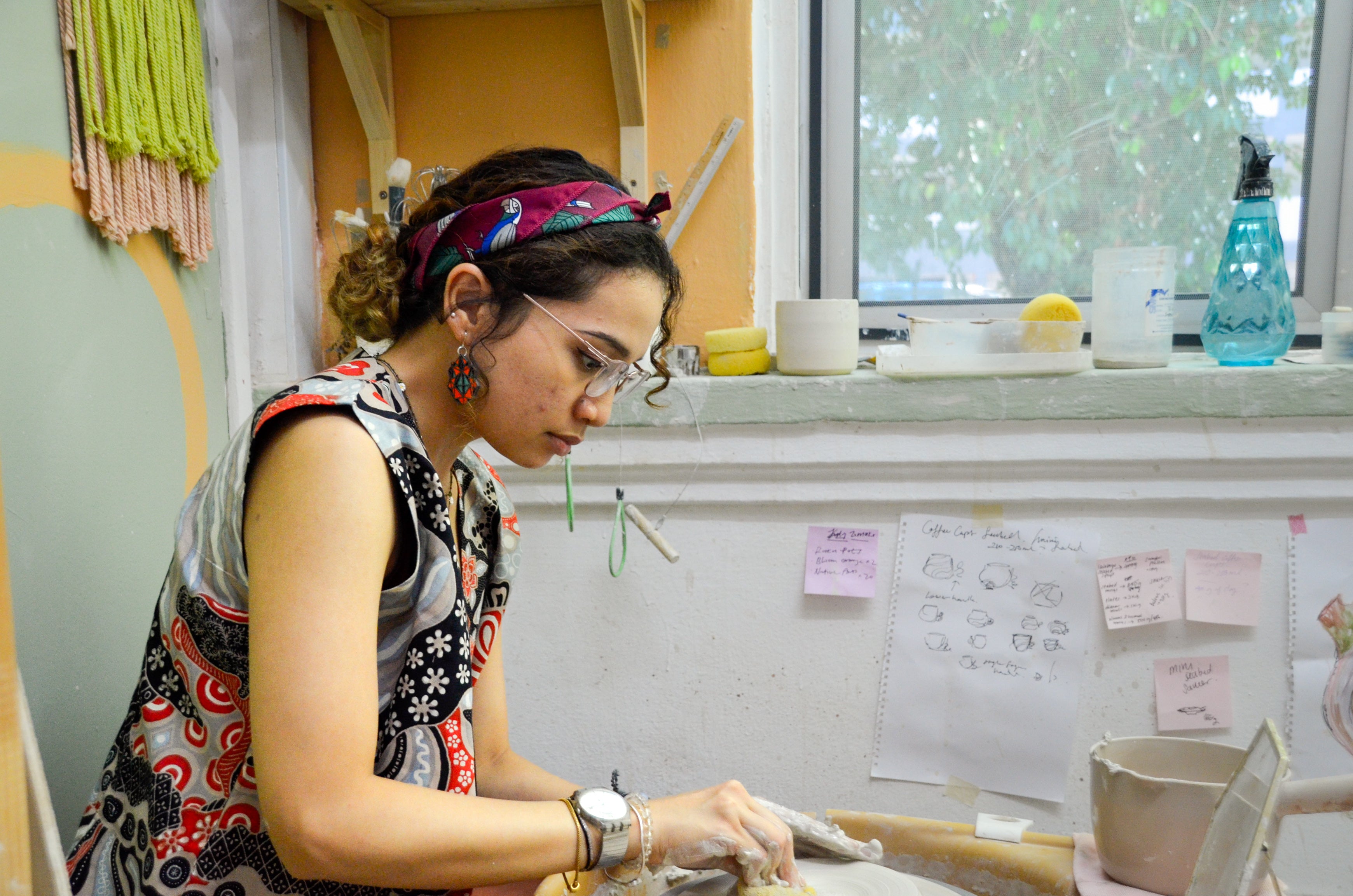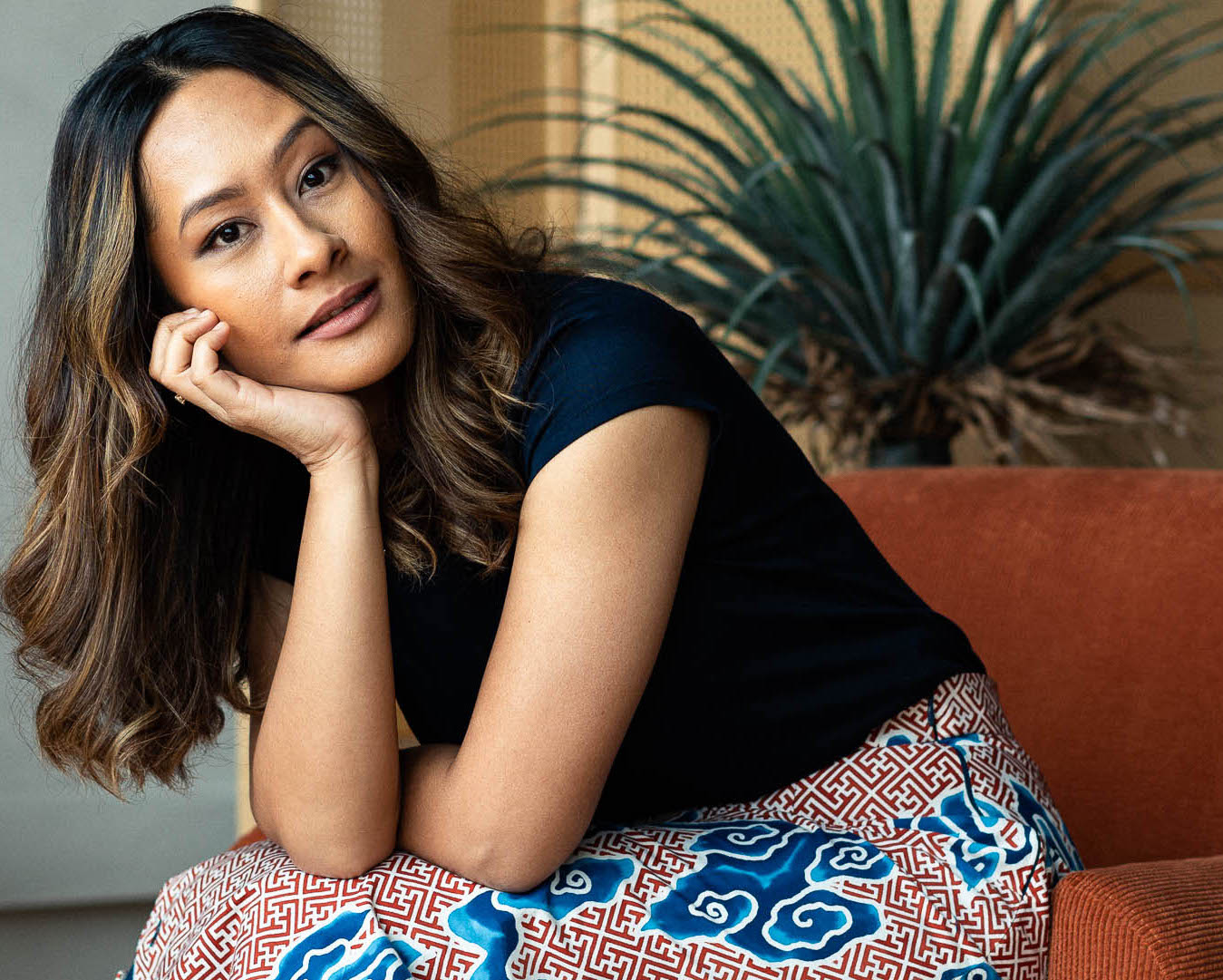
We sat down with Ummu recently at her studio in Pearl’s Hill Terrace, where she shared about her journey in becoming a trained ceramics artist, and an exciting peek behind-the-scenes into the process before her upcoming launch.
Can you tell us about your journey in becoming a ceramic artist?
When I started Ummuramics, I was really excited about the medium. I was doing a Fine Arts program in NAFA in 2015 and choosing a major for my second year, and thought I had decided on painting! But after watching a lecturer do a throwing demo, I had a change of heart and decided to pursue a ceramics major instead.The medium amazed me so much and I wanted to share it with more people, so I started by sharing on Instagram, after seeing western pottery artists do the same. At that time Instagram was still new and unlike what it is today.
Eventually I wanted to try selling my pieces so I joined art markets like MAAD (Market of Artists & Designers) at Red Dot Museum. My very first art market was at The Local People at Fort Canning.
Today, your works stand out visually. We know an Ummuramics piece when we see one. How has the Ummuramics identity evolved since its early days?
After graduation, I headed towards making pieces that looked super raw, like senget-senget but were also minimalist as that was what I saw around me. But truly, I was not feeling it at all. And I guess people around me felt the same — I was selling one vase a month. I then realised that I was trying to correct myself a lot in terms of technique and that resulted in how my final works looked like. That happens a lot today (in local ceramic works), you either learn ceramics by technique or by concept.
So for me, because I go to art school, my lecturers were constantly drilling me with the question: “What is the concept?”. I went back to this process and it made a difference in my work. So when I’m making my mugs even now, I ask myself “What is the concept? Instead of stressing over how the handle has to be perfectly attached to the body of a mug, for example, I reconnect with the feeling that I want to capture through the mug I am making.
It took awhile for me to get here. I realised that I have to do what I want to do and it has to come from the heart, and I’m very comfortable with what I’m making now.
Along the way I’ve made other ceramic works and they are not for sale, because they are like a memorabilia of milestones in my life.

And so the seabed mugs were born!
Yes! When I made the seabed mugs and people liked them, it was like an “Oh there is a group of people like me too.”, and that is great.
"It took awhile for me to get here. I realised that I have to do what I want to do and it has to come from the heart, and I'm very comfortable with what I'm making now."
Do you have a creative process that you stick to?
My creative process starts with photos. I take pictures of what I see, so that I can remember how I feel about what I saw. So it is really more of (my) emotions rather than the visual aspect, for that one slight moment before you get distracted by how nice something looks. Which is why I think we must stop to take in what we see.
So the rainbow cup, for example, it came about because I saw one, and noticed how everyone around me, young and old were mesmerised by it too. I wanted to capture that memory and feeling. It was amazing.
Is that how your iconic SeaHeart came to reality too? I imagine you must feel a deep connection to the sea and bodies of water.
I think every human being feels a connection to water. The relationship between humans and the ocean matters, aren't we somewhat a body of water walking on earth? I listened to a podcast once, and someone mentioned that we are all part water, that morphed into human beings. The SeaHeart started as a project in school, when we were learning to slip cast. So slip casting means to make a mould for production. Initially I was making a pumpkin-shaped mould but I wasn’t feeling it. I ended up combining two things I love — biology and sea creatures.
I am mesmerised by how our bodies work, the explanation behind how our hearts and brains are connected, for example. So I sketched a heart together with a seahorse and that’s how the SeaHeart came to be. Until today people are confused by what it is though, but it has stuck with me all the way.
The ocean must make you feel something...
So good. Have you noticed the movement of the seabeds while floating? If you float downwards, and notice the movement of the seafloor, that is what I am trying to capture in my seabed mugs. The feeling, the movement of the seabeds while I am floating downwards. It is a magical feeling.

"I think every human being feels a connection to water. The relationship between humans and the ocean matters, aren't we somewhat a body of water walking on earth?" - Ummu
Are there any misconceptions that customers or budding clay artists have about pottery?
Misconceptions.. hmm one would be that people think it is easy (to do this), or that when you are a full-time crafter, you earn a lot. And that no practice is needed. I would say that there is no shortcut, practice x10000. Do it because you enjoy this amazing craft, and respect the medium.
Do you think people perhaps mistake a perceived freedom of time as a full-time crafter with money?
Yes they do! But the truth is, it took me very long to take off and to be in this position where I am able to sell my ceramic pieces. Today I am making more production works, but I was trained as an artist. In time, I hope to go back to being an artist and have an exhibition for my works instead. I do believe that when the right time comes it will happen.
Which part of the pottery process do you enjoy most?
My favourite part is what is known as throwing. It is a very old English word, and not the act of throwing. To throw is to twist and turn the clay, so you shape it from the hump, into whatever you want it to be.
How do you tell when a ceramic is made by an amateur or an experienced artist?
You have to feel if the piece weighs equally throughout or not. You can tell if an artist is a beginner if the bottom of the piece feels heavy. The piece can be heavy overall, but it should feel nicely heavy. The weight is spread out and even. Being taught traditionally, I trim my pots. Technique-wise, trimming (the clay) is an important part of the process.
Finally, share with us someone who inspires you in your work and life.
Funnily enough, the person who comes to mind is not a ceramics artist. She is a marine biologist and oceanographer named Sylvia Earle. She is still diving, at 86 years old. I admire her spirit.
"My favourite part is what is known as throwing. It is a very old English word, and not the act of throwing. To throw is to twist and turn the clay, so you shape it from the hump, into whatever you want it to be. .” - Ummu

—
Words: Team Gypsied
Images: Atina D'Lyla


